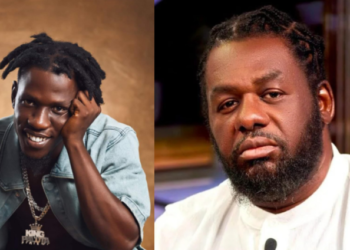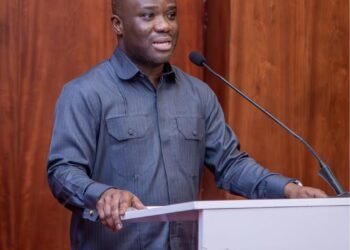Highlife music originated in Ghana in the early 20th century and has evolved through the decades, blending traditional African rhythms with Western musical elements.
While highlife has a rich history and cultural significance, many younger artists today hesitate to identify themselves as highlife musicians.
Renowned Highlife musician, Okyeame Kwame, has raised concerns about the future of highlife music in Ghana.
According to him, the country itself is not interested in making the genre attractive and affordable enough for younger artists, hence, the genre is at risk of losing its originality.
Kwame called for immediate action to preserve the genre, which described as the foundation of Ghanaian music.
He explained that creating authentic Highlife music is expensive and requires a deep understanding of music theory; something that young artists in the industry lack.
“We need to make it economically viable. However, as it stands, the country is not interested in making Highlife music so viable that my son would want to say, ‘One day, I’m a musician, and I make Highlife music.’
“One of the key reasons young people do not want to make highlife music is because it is too expensive to create. To create a good Highlife song, you need horns, a guitarist, a keyboardist, and someone to record. You’re already spending about Ghc20,000 on just one record.”
Okyeame Kwame
As global culture becomes increasingly interconnected, younger artists often seek to carve out a unique identity that reflects their personal experiences and influences.

Highlife, while cherished, is often viewed as a genre tied to the past. For many young musicians, embracing highlife feels like a limitation, as they aim to explore a broader range of influences, including hip-hop, Afrobeats, reggae, and electronic music.
This desire for cultural evolution is part of a larger movement among younger generations to redefine what it means to be an artist in a rapidly changing world.
Okyeame Kwame shared that many young musicians lack the apprenticeship or formal training needed to master the genre.
“Highlife music is not just creating a song; it’s actually music. Most young people today haven’t gone through apprenticeship or studied music professionally, making it almost impossible for them to become good Highlife musicians.”
Okyeame Kwame
Highlife is sometimes perceived as a genre that caters primarily to older generations. Younger audiences associate it with nostalgia and traditional values, which feel out of sync with the contemporary lifestyle and issues they wish to address in their music.
As a result, younger artists shy away from the label of highlife musicians to avoid being pigeonholed into a genre that they feel does not resonate with their current realities or the themes they want to explore.
Commercial Considerations for Highlife Music

The commercial landscape of the music industry has changed dramatically, with streaming services and social media playing pivotal roles in how music is consumed and promoted.
Younger artists are often focused on reaching global audiences and believe that the Highlife label could limit their marketability.
In a world where genres are increasingly fluid, artists opt for broader categories or create labels to attract diverse listeners.
This commercial strategy leads to a reluctance to associate with highlife, which does not hold the same appeal to international audiences as other genres.
For many younger artists, authenticity is a crucial aspect of their artistic expression. They feel that the highlife label carries certain expectations and conventions that do not align with their personal narratives.
By distancing themselves from highlife, they assert their individuality and authenticity, allowing them to create music that genuinely reflects their thoughts, feelings, and experiences without being confined to traditional highlife themes or structures.
The global music scene has seen a surge in the popularity of genres like Afrobeats, trap, and K-pop, which often dominate charts and social media trends.
Younger artists, influenced by these global movements, feel compelled to align their music with these trending genres rather than highlife.
This alignment not only enhances their visibility but also allows them to engage with a more diverse audience, further distancing themselves from the highlife label.

To address these challenges, Okyeame Kwame called for government intervention, suggesting that the Ministry of Tourism, Creative Arts, and Culture collaborate with institutions like the Performing Arts School to offer scholarship programs and proficiency.
“Imagine Kwami Eugene, KiDi, and others sitting down with legends like Daddy Lumba and Pat Thomas for three weeks to learn the spirit of Highlife. That’s the kind of initiative we need.”
Okyeame Kwame
The reluctance of younger artists to be identified as highlife musicians reflects a complex interplay of cultural evolution, personal identity, and commercial considerations.
As they navigate a rapidly changing musical landscape, these artists seek to forge their paths, embracing innovation and authenticity while engaging with a global audience.
While highlife will always hold a significant place in the hearts of many, the future of music is undoubtedly shaped by the voices of the younger generation, who are eager to explore new horizons beyond traditional labels.
READ ALSO: President Mahama to Deliver First State of the Nation Address Today




















